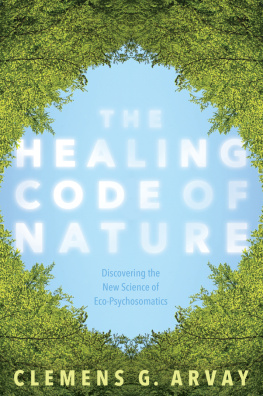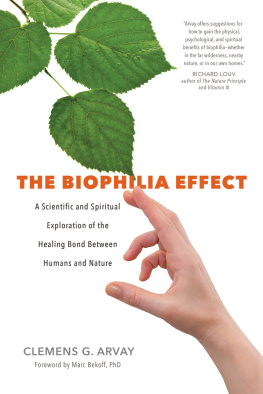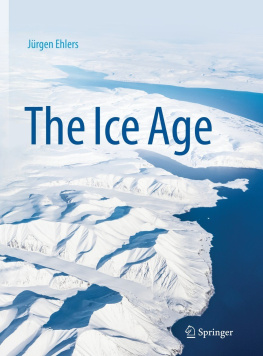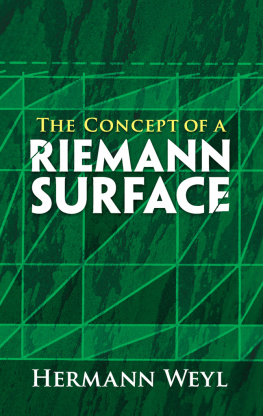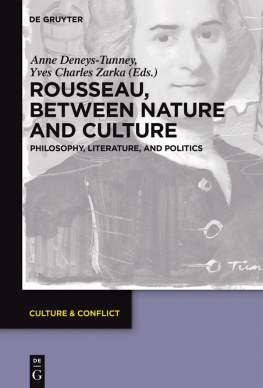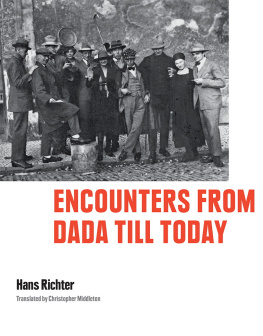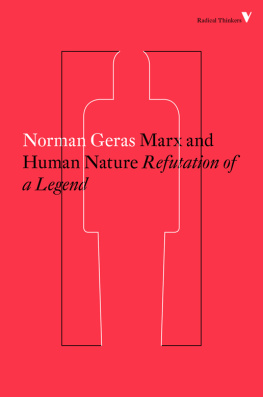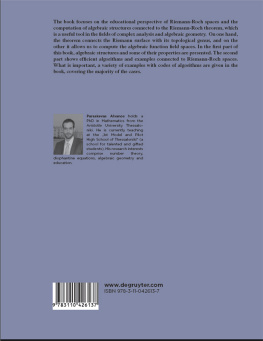
All life processes, from a cell all the way to the coexistence of humanity and nature, are always profoundly intertwined. All parts mesh with each other.
HERMANN HAKEN
CONTENTS
FOREWORD
NATURE AND HEALTH ATOPIC FOR THE NEW MILLENNIUM

Books about healing are often written with older audiences in mind. There are, however, good reasons to also address younger people, who will be able to approach open questions from a new angle and help shape the future of our society. In the 1980s and 1990s, the so-called Millennials were born, also known as Generation Y (as in why). The Millennials (but not just them) really do question almost everything in existence: Does our lifestyle have to harm the environment? Is there really nothing more than what science has discovered so far?
Henry David Thoreau (18171862) answered these questions through the construct of simplicity: an independent life close to nature (as an alternative to a society controlled by artificial needs) brings humans closer to real life.
The Millennials are sensitized to the protection of natural habitats and know the deficits of a purely technological, rationalistic view of nature. Therefore, they are particularly open to the increasingly evidence-based body of knowledge about the positive effect of nature on humans. (Clemens G. Arvay, born in 1980, belongs to the oldest age group of the Millennials.) But middle-aged and elderly people are also familiar with the problem: the world is economically drained, and the destruction of its natural resources is just as alarming, if not more so.
Arvay shows how closely the health of the individual and society is related to the health of the planet. The main focus of this book is comprehensively explaining how contact with nature affects our organs and cells. The author also highlights our relationship to animals and shows how encounters between humans and animals have proven medical and therapeutic effects on us.
In this book, Arvay expands on the basic insights from his book The Biophilia Effect, which focuses on showing us how to experience the healing powers of the forest through practical exercises. He provides abundant new evidence for the wide range of natures positive effects and elaborates on the healing powers of plants and animals with a solid scientific basis. As a biologist, he makes it clear that green science plays an important role in the development of preventive measures and treatments in medicine. We have implemented these findings at our university in order to improve patients lives in the neighboring geriatric center through garden therapy, for example. The successful results show that this way of experiencing natures resources can be beneficial for everyone.
I hope that you will gain many new and useful insights while reading this interesting book and find inspiration to discover how you can help maintain or restore your health responsibly through the healing power of plants and animals.
Dr. Thomas Haase
Rector of the University College for Agrarian and Environmental Pedagogy
Vienna, February 2016
INTRODUCTION
WHAT AWAITS YOU IN THIS BOOK

Over the course of this book, I will carry you away on a journey back to the first living cell on Earth to explore our profound connection with plants and animals and to develop a medicine of the future from these insights. This medicine will see us humans, once again, as we are: as natural beings, inseparable from our natural habitats. We do not end at the surface of our skin!
I call this science nature-human medicine, but in the course of the book, I will introduce the more suitable term eco-psychosomatics. I will come to this term step by step because it needs to be built upon a solid scientific base. Well begin our exploration with some astonishing discoveries of modern research. Did you know that the sight of a tree alone activates the self-healing powers of a human being and that more trees in big cities would result in measurable, rejuvenating changes in the city-dwellers blood, making people look and feel years younger? Contact with friendly animals is proven to strengthen our immune system and even helps with the recovery of critically ill patients. At some clinics, dogs, cats, guinea pigs, and rabbits are already employed as therapistswith wonderful results! Well also see how encounters with wild animals can have a healing effect.
Did you know that when we inhale a cocktail of bioactive plant matter from the forest air, it strengthens our bodies defenses so much that even the international cancer research community has started paying attention to these tree substances? You will learn what these substances have to do with the language of plants.
Nature-human medicine is anything but esoteric. It is the key to better medical treatments because it takes into consideration that people have been connected with plants, animals, and ecosystems over eons. By considering this, we can better understand diseases, protect ourselves from them, and treat them more effectively. We also become more familiar with our own species and our relationship with animals, which are more similar to us than many of us have realized. Modern discoveries in biology show that mechanisms are in place in our brain and nervous system that support us in establishing true friendships and relationships with animals. These biochemical connections trigger beneficial effects on our healthand, coincidentally, on the animals health as well, as long as we treat them with dignity. The upcoming chapters also provide arguments to rethink societys treatment of animals.
Everything in this book revolves around scientific explanations for the hidden powers of plants and animals, which keep us healthy when we open up to them. We will be exploring the healing effects of nature down to our organs and deep into our cells. Thus, we will see, for example, how our nerves translate the symbolic language of nature and sensory stimuli from the world of plants and animals into something physical.
With that in mind, I welcome you now to join me in exploring nature-human medicine. Our journey will take us all the way back to the Big Bang.
THE MYSTERY OF TREES

What Do Trees Have to Do with Our Health?
When I was writing this book, my little son, Jonas, was in the hospital, and I was at his side as his caregiver. We shared a room at the university clinic for pediatrics in my former hometown of Graz in the south of Austria. The inpatient treatment lasted several weeks and was associated with numerous hardships for my little patient, who was then only seventeen months old. At times they pricked his finger every day to draw blood, and during the night, he was often attached to an IV for hours or connected with wires to medical devices. The long hospital stay and the constant uncertainty of how long it was going to last drained my strength, as well as that of my son. But around the clinic there was something that brightened our mood and helped us to not lose courage: a vast forest. The pediatric clinic, which lay directly on the edge of the forest, was literally embedded in a woodland landscape.
Every day, as soon as we went outside through the ground-floor entrance, Jonas started to kick his legs and laugh in his baby carriage, full of joyful anticipation. We had discovered a narrow path off the main route in the forest at the beginning of our stay. Right around the first bend, we were greeted by an old beech tree with a thick, silver-gray trunk. Every time we passed it, Jonas followed the trunk up to the top with his gaze. Above our heads, the beech spread its branches into a mighty crown. It was autumn, and the foliage shone in intense colors of red and yellow. We roamed through the thicket and picked the last berries of the year from twisting, thorny plants. We watched deer and squirrels. Once we even saw a fox.
Next page
